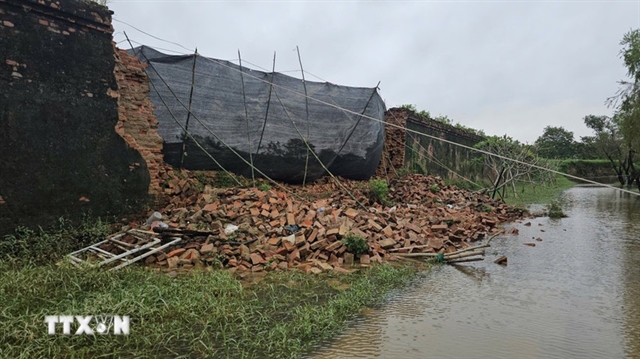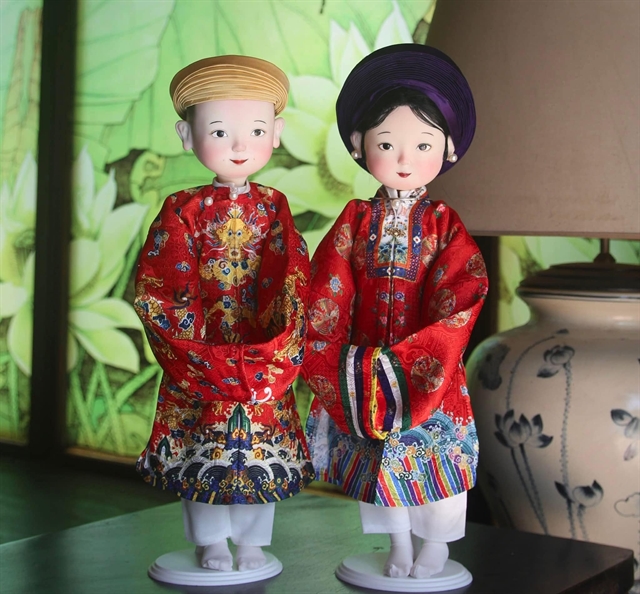 Features
Features

The popular folk game called kéo co (tug of war) is part of cultural festivals nationwide.
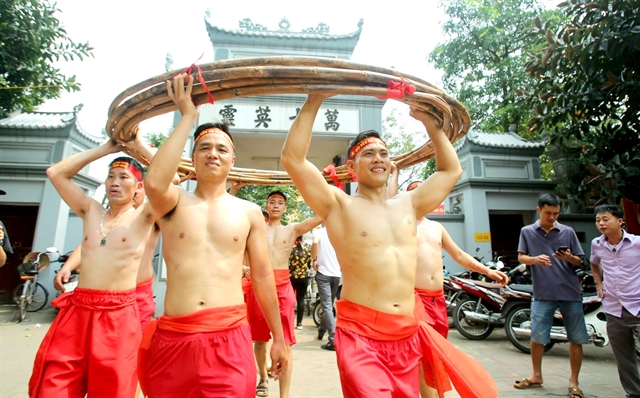
|
| Local young men carry a 50m-long rattan stem, the main piece of equipment for the kéo co ngồi (sitting tug of war) competition - a folk game held during the annual traditional festival in Trấn Vũ Temple, Hà Nội's Long Biên District. VNA/VNS Photo Thành Đạt |
Dozens of young hunky men dressed in traditional clothes are divided into two teams to compete in a game of tug of war using a rope, a long bamboo cane, or a long rattan stem.
These are the common features of a popular folk game called kéo co (tug of war) that is part of cultural festivals nationwide.
The game is played and preserved in a unique way by locals in Ngọc Trì Village, Thạch Bàn Ward, Hà Nội's Long Biên District.
Kéo co ngồi (sitting tug of war) usually takes place at Trấn Vũ Temple in the village every year to show people’s respect for deities and express their wishes for a peaceful future with good health and bumper crops.
The folk game and rituals at Trấn Vũ Temple in 2019 were certified by the UN culture agency UNESCO to recognise them as part of the Representative List of Intangible Cultural Heritage.
Played on a clay yard often in the morning, the game includes two teams of competitors sitting on either end of a 50-metre rattan stem who try to tug it from the other. The stem passes through a wood pillar planted on the ground between the two teams.
According to legend, a long time ago Ngọc Trì Village suffered a severe drought. Some 11 out of 12 wells in the village ran dry. Only one well in a hamlet named Đìa had water.
Men from the other two hamlets of Đường and Chợ went to Đìa well to fetch water but were stopped by local men. They forcibly pulled out water buckets and the ropes they used to carry the buckets. Being afraid they would spill the water out of the buckets, they sat down to hold the buckets firmly.
When everything returned to normal, the villagers remembered the hard times by performing sitting tug of war at the village’s festivals.
Players of the game today are those selected from families with up to five generations living in Ngọc Trì Village. After a ritual at Trấn Vũ Temple nearby the village, three teams from Đường, Đìa and Chợ hamlets join the competition.

|
| A ceremony is carried out before the game by senior villagers. VNA/VNS Photo Thành Đạt |
Every year, the number of players in each team changes depends on the number of local men, mostly young, at the age of between 18 and 35, and decided by the organisers.
All of the competitors should be strong and be in good moral standing in the community. They have to sit during the entire game with one leg outstretched and one leg bent to hold the stem firmly under their armpits. If one competitor stands up, his team will lose immediately.
Lương Đức Hoàng Anh, from Ngọc Trì Village, felt honoured to be chosen twice to compete.
"I am very honoured that this is the second time I have been chosen to join the village's tug of war. Before competing, I worked hard to exercise and do sports to increase my strength and endurance," he said.
Phạm Duy Đồng, a player from the Đường hamlet team, said: “We use the strength of the back and arm to hold and tug the stem. We stamp firmly on the ground to increase the leverage.”
The players said sitting tug of war is different from the normal version in which the stronger team can quickly defeat the weaker team.
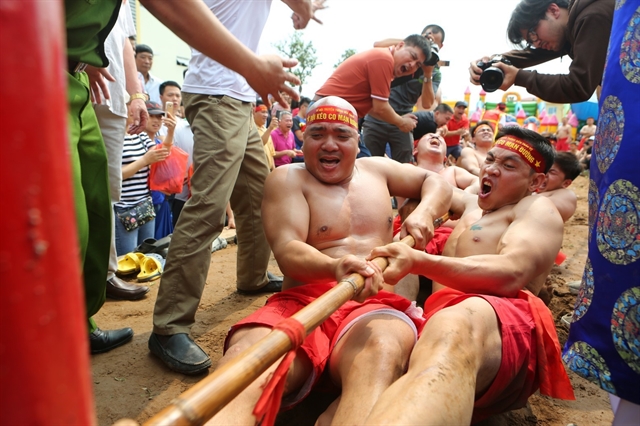
|
| Fierce competition is always the most exciting part of the game. -- VNA/VNS Photo Thành Đạt |
In sitting tug of war, the weaker team can compete if they know how to grip the rattan stem and manipulate it on the pillar.
"This is a team-building game that relies on combined strength. In the boisterous atmosphere, the players have to pay attention to the flag affixed to the rattan stem which determines position,” said Nguyễn Ngọc Mai, a senior villager who once refereed the game.
Big festivals of Ngọc Trì Village often include the sitting tug of war game, according to the elders in the village.
Original preservation
This game originated from Đằng Đông Temple, also in Ngọc Trì Village, but was later moved to perform in Trấn Vũ Temple since Đằng Đông Temple was damaged during wars, many elderly villagers have said.
The Thạch Bàn Ward authority in co-operation with the Long Biên District's division of culture recently held a scientific workshop on the historical and cultural value of Đằng Đông Temple to better preserve the heritage.
According to history professor Lê Văn Lan, during the late 19th century, Đằng Đông Temple was used as a training ground for fighters of the historical Bãi Sậy uprising movement (1883-1892) against the French.
Before the August 1945 Revolution, the temple was used as a meeting place of Ngọc Trì Village's guerrillas to organise their uprising activities against the French and Japanese, and establish a revolutionary administration.
During the anti-American war between 1966 and 1970, the temple was the headquarters of the 220th anti-aircraft artillery regiment. It was also a place to store weapons for armed forces during the glorious Điện Biên Phủ in the Air campaign in 1972.
Bùi Thế Quân, deputy head of Culture and Information Division, Long Biên District, said with many historical and cultural relics closely associated with Đằng Đông Temple, the restoration and promotion of heritage values of the temple was a legitimate aspiration of the local people and in line with the Party and State's policy of building and developing a culture imbued with traditional and national identity. VNS
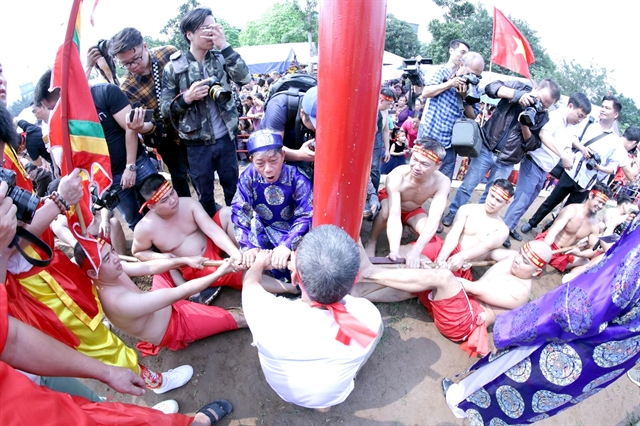
|
| During the game kéo co ngồi (sitting tug of war), elderly men will play the roles of judges. -- VNA/VNS Photo Anh Tuấn |


